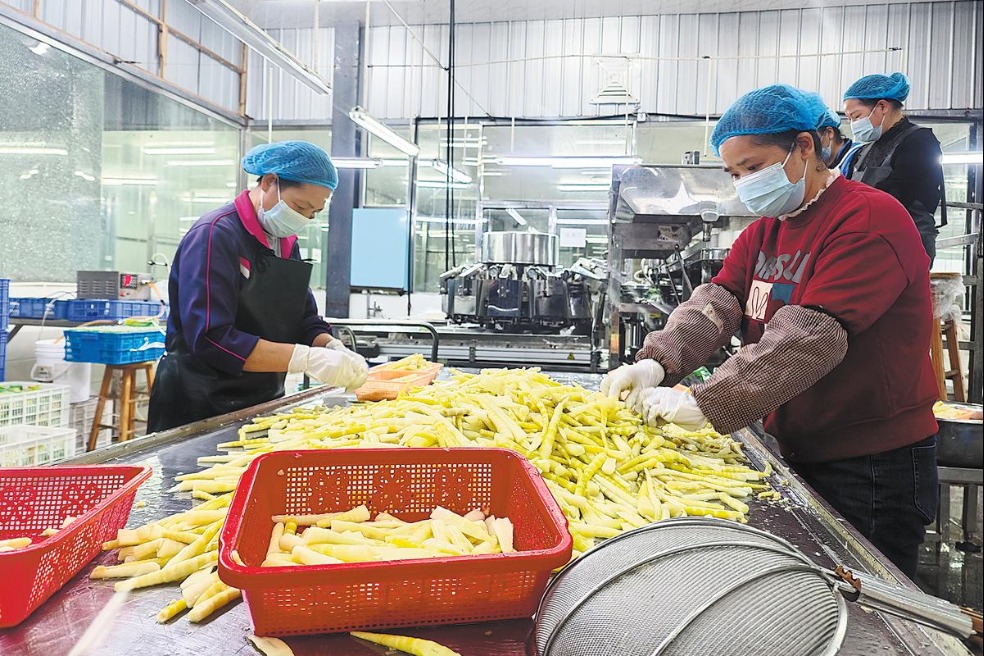A history of endeavor
Exhibition at the Capital Museum recalls highlights of the glorious past and golden moments of Chinese sports, Wang Kaihao reports.

The Summer Olympics were held in Beijing 14 years ago, now the city is ready for the Winter Games. With only a few weeks to go before the opening, a new exhibition at the Capital Museum is recalling highlights in Chinese sports.
At Inheritance and Surpassing: Exhibition of Chinese Sports Culture and the Dual Olympics, which opened on Dec 31, some 200 exhibits are telling the rich stories of sport in China. The exhibition, jointly organized by China Sports Museum and the Capital Museum, covers a wide spectrum ranging from various types of cultural relics in ancient sports-dating back centuries or even 2,000 years-to Olympic torches, medals and noted Chinese athletes' personal belongings.
"Sports culture is deeply rooted in the soil of ancient Chinese civilization," says Huang Jin, deputy director of China Sports Museum and curator of the ongoing exhibition. "Everlasting inheritance of such sports reflect Chinese people's collective ethos and pursuit of etiquette and inclusiveness. They also demonstrate how Chinese people respect nature while emphasizing humanity."
According to him, cultural relics can "talk" and visitors can get inspired by walking around the gallery.
Archery and equine sports are most commonly portrayed themes in old exhibits. Bronze crossbows and arrows from the Warring States Period (475-221 BC), for example, usher visitors to review soldiers' bravery on battlefields and their intense physical training. Even outside war, archery was a popular entertainment for the public, particularly among the nomadic ethnic groups in northern China. Surviving documents show that the earliest known archery competition in China was held during the reign of Emperor Xiaowen in the Northern Wei Dynasty (386-534) in late 5th century AD. Although social stability was restored by the Northern Wei emperor, who oversaw a period of prosperity, it was also a way to enhance security.
Scroll paintings of hunting scenes from the imperial court of the Qing Dynasty (1644-1911), on display, show not only royal aura but also how horse-riding was favored by aristocrats then. Such riding and hunting scenes are also seen in other exhibits like decorations on a Han Dynasty (206 BC-AD 220) pottery jar.
In ancient China, sport was not only about physical competition, but also mental. Seeing the displayed Qing Dynasty set of Go, a traditional Chinese board game with wide influence in East Asia, people can imagine how two players instructed a "battle" against each other on the square grid, showing their mental power.
The exhibition brings some surprises. For example, if not for the decorative patterns on a Jin Dynasty (1115-1234) bronze mirror, visitors today would hardly realize that diving had existed in China around 900 years ago. The sport, called "water swing" then, was a mixture of competition and acrobatics.
"By unveiling the historical, artistic and cultural values of these artifacts, we can show the wide influence of sports in China," Huang says. "They reflect a shared pursuit, echoing the Olympic spirit today."
The booming situation of sports is further elaborated in the section on modern China. Nevertheless, behind the more than 270 gold medals won by Chinese athletics in both Summer and Winter Games in the past decades, there was a long journey overcoming difficulties in recent history. For the exhibition, Huang selected many precious documents since the early 20th century to unroll Chinese people's continuous efforts to make breakthroughs.
"The Olympics were first introduced in China when patriotic people were calling for the national revival from deep crisis," he says. "Sports were given greater significance to save the country (through physical strength). The Olympics dream thus created a foundation for modern sports in China."
A book published in 1904, titled Tiyu Tushuo ("illustration of physical education") is also displayed at the exhibition. It was the first time that the word tiyu, literally translated in Chinese from "physical education" in English, appeared in a book title.
An exhibited gymnastics textbook for elementary schools in 1910 is also a precious example of the early days of modern physical education in China.
By comparison, Chinese athletes' achievements in the Olympics since the 1980s are a way to understand the country's sports revival. The exhibited athletes' clothing takes visitors back to glorious moments, including the suit of China's first Olympian Xu Haifeng, who stood on a medal podium at the 1984 Los Angeles Games, and the suit of sprinter Liu Xiang, who crossed the final line in the 2004 Athens Olympics, winning glory for China. Also, the equipment of speedskaters Yang Yang and Li Jiajun, among others, remind people of the painstaking yet steady steps taken in winter sports in China.
"Museums have the duty to record today for the sake of tomorrow," Han Zhanming, director of the Capital Museum, says. "With a warm touch of history, we also want to create an atmosphere full of cultures for the Winter Olympics."
The exhibition runs until March 15.





Today's Top News
- Drills demonstrate China's resolve to defend sovereignty against external interference
- Trump says 'a lot closer' to Ukraine peace deal following talks with Zelensky
- China pilots L3 vehicles on roads
- PLA conducts 'Justice Mission 2025' drills around Taiwan
- Partnership becomes pressure for Europe
- China bids to cement Cambodian-Thai truce






























